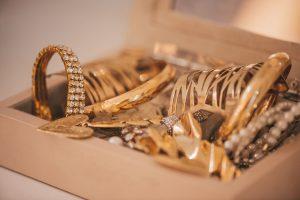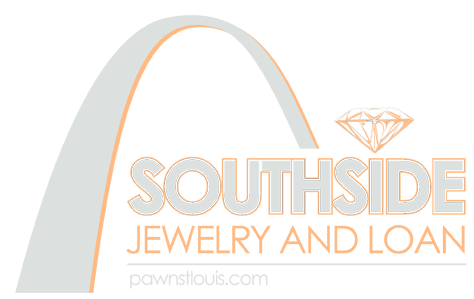Key Takeaways
-
Get your paperwork in order for jewelry loan or pawn with these tips.
-
If you have accurate appraisals and understand what contributes to value like metal type, gemstone quality, brand, condition, etc., it’ll help your loan offer immensely.
-
Understand & haggle loan terms – pawnshops can charge high interest but its often negotiable, as are repayment plans and fees, so be sure to avoid a bad deal.
-
Protect your rights by knowing local laws, verifying data privacy and selecting trustworthy pawn shops that operate transparently.
-
Consider the potential advantages and disadvantages of pawning vs. selling your jewelry depending on your current financial situation and desired outcome.
-
Don’t make the rookie errors of taking the first offer, signing all the paperwork without reading it, and never seeking a second or third appraisal or opinion.
– quick cash, jewelry as pledge, pawn shop That’s why so many people use this option when they want money without permanently selling their pieces. St. Louis has a variety of licensed pawn shops that accept gold, silver, diamonds and even designer watches. Each shop determines its own rates and terms, and the majority provide service on the same day. No credit check required, and your items remain secure until you repay the loan. Local laws protect the borrower and the pawn shop. Below it breaks down what shops take, how loans work, and what to check before you go.
The Loan Process
Jewelry loans or pawns in St. Louis have a defined process, each step of which is fast and transparent. The experience is supposed to be seamless, with a number of shops able to wrap up and disburse funds in only a couple of hours. The steps are roughly the same anywhere in the world, knowing what to expect can help you maximize your loan amount and guarantee a smooth ride.
-
Take your jewelry and all of the accompanying paperwork to a quality pawn shop.
-
Go through an expert appraisal, where your piece’s value is evaluated.
-
Get an offer and review loan terms such as interest rates.
-
Finalizing all the paperwork, including ID and ownership.
-
Get paid, with hundreds of stores paying in as little as 4 hours.
-
Pay off the loan on time and get your jewelry back.
1. Your Item
The kind of jewelry you come in with – gold, diamonds, designer brands – influences the loan sum. Condition counts — pristine, well-preserved pieces tend to command higher prices. Bring original boxes, receipts or appraisals, if you have them, as these add credibility and can increase the item’s value. If your jewelry is desired—such as gold chains or diamond rings—it might be valued higher.
2. The Appraisal
A staff appraiser tests the metals, weighs the piece and examines any stones. Appraisals can consist of basic chemical tests, electronic detectors, or a jeweler’s loupe for close examination. Shops appreciate transparency and fairness, so this is a good step to ask questions. A comprehensive appraisal can fetch you more favorable loan terms, as it provides both you and the pawnbroker with a concrete value of the item.
3. The Offer
Following the appraisal, the pawnbroker offers a loan. This is where haggling occurs, since deals may vary from store to store. Pay attention to the interest rate, repayment dates, and fees. Certain shops might have flexible repayment options or lower rates for repeat customers. Accept only if the terms suit you.
4. The Paperwork

They have you complete paperwork and display identification—typically a passport or driver’s license. Ownership documentation, such as receipts or appraisals, keeps problems at bay. Look over the contract for terms, interest and repayment date. Retain a copy for your files.
5. The Repayment
Compare your repayment schedule and total interest before you sign them. Miss a payment and you can lose your jewelry. Certain stores allow you to pay in advance to avoid interest. If you run into trouble, speak to the shop – they might provide extensions!
Valuation Factors
Jewelry loans or pawns depend on an accurate, judicious valuation. There are a few fundamental factors that influence the loan sum you can receive. These can be the metal, the grade of stones, the brand and condition. Market demand, documentation, and proper certification are big factors. Buyers and lenders view these parts with a keen eye, applying both international benchmarks and trends to determine accurate valuations.
Metal
Gold, silver, platinum – all have their own value and loan amounts. The mass and fineness of each metal, frequently stamped with hallmarks, are verified when appraising. For example, gold is valued by weight in grams, and high-karat gold (18k or 24k) fetches a premium over lesser alloys. Appraisers seek out purity marks, often stamped inside a ring or on a clasp, to verify quality.
|
Metal |
Market Value (per gram) |
Typical Loan Potential |
Purity Mark Example |
|---|---|---|---|
|
Gold |
High |
High |
18k, 24k |
|
Silver |
Moderate |
Low to moderate |
925 |
|
Platinum |
Highest |
High |
Pt950 |
Weight is important because more grams equal more value. Big, platinum diamond rings or thick gold chains tend to command bigger loans. Always look for purity marks – these are key for appraisers to trust the metal’s quality.
Gemstones
A significant portion of a jewelry’s valuation comes from its gemstones. Diamonds and colored gems contribute significantly to the ultimate valuation. Valuators consider the variety, dimensions and quality. Diamonds go by cut, color, clarity and carat. Higher-grade stones can raise the loan offer by a significant amount. Rare jewels, such as natural sapphires or emeralds, can push the value even higher.
When you have a stone certified by organizations such as GIA, it means the valuation is reliable and more precise. If you’re not certain, it’s smart to seek a second opinion from an independent gemologist. This, in turn, helps prevent undervaluation from overlooked features.
Brand
-
Tiffany & Co.
-
Cartier
-
Bulgari
-
Van Cleef & Arpels
-
Harry Winston
Recognizable names such as these elevate worth and sometimes generate higher loan bids. Consumers believe in brands with a heritage of excellence and luxury. Paper and provenance count—Tiffany diamonds, for instance, can command a 15-25% premium over unbranded stones with identical specs. Looking up recent sales of similar branded items will give you a good sense for what you can expect to receive as a pawn value.
Condition
Check your jewelry for obvious wear, loose stones or broken clasps. Nice, undamaged stuff is going to fetch a solid bid. If it needs minor repairs, though, repairing it first can pay off. Well-preserved items frequently get valued at 30–60% of their original price, with used ones being even lower. For maximum effect, show your jewels in their best form.
Your Protections
When you borrow against jewelry in St. Louis or pawn it, you have your protections. State laws, transparent loan terms and rigid privacy regulations all combine to assist in ensuring that you, the borrower, are dealt with fairly. Reputable pawn shops adhere to these guidelines, and offer a safe location for your items.
State Laws
State regulations in St. Louis establish the basis for pawn shops. Stores must request identification and log every sale, which ties ownership to the buyer and dissuades theft. For jewelry and other hard goods there’s typically a 15-day holding period. This allows stores to query state databases of stolen goods and provides you a measure of assurance that your property is safe in this period.
Interest rates are limited by statute to make things equitable. By keeping current with changes in these laws, you can spot new borrower protections or rule changes. Not all shops are created equal—there will be some who attempt to push the boundaries, but by simply sticking with licensed businesses, you reduce your exposure.
Loan Terms
-
Ask about interest rates and how they’re calculated
-
See if there are sneaky fees or additional service charges.
-
Read the repayment schedule carefully
-
Find out what happens if you pay late
-
Find out if they’re willing to extend a loan and on what terms
-
Know what happens if you default.
Rolling over your loan usually equates to additional fees, therefore consider this alternative with caution. A lot of shops will allow you to extend your payment term, but typically only if you pay the interest first. Bargain if you can, a few stores may alter terms to accommodate you. If you can’t pay back, you may lose your stuff so understand what’s on the line before you ink.
Data Privacy
Great pawn shops guard your information. They protect your information on secure servers and will tell you how they use your details. Request to review their privacy policy and verify that they adhere to local regulations regarding data protection. Opt for stores with a proven history of discretion and who employ secure, alarmed storage rooms for your jewelry.
Trusted Practices
Seek out shops that employ vaults with fireproofing and round-the-clock security. Check contracts carefully before you ink. Only deal with shops that explicitly describe all terms.
Loan or Sale?
When deciding on a jewelry loan or sale, it’s savvy to consider both possibilities thoughtfully. A loan leverages your jewelry as security. You receive a loan, then repay it with interest to buy back your chunk. Selling is when you give ownership away for a lump sum. This distinction between these two routes defines the cost and benefit, both in the present and in the future.
Selling jewelry tends to be a better way to generate immediate cash. If you need a fast, bigger chunk of change, you should probably sell. For instance, if you have a gold ring and sell it, the shop or buyer pays you upfront and that’s it. There’s no additional obligation. The jewelry’s gone, but so is any risk of late fees or interest accumulating. Folks that don’t mean to hold on to it, or who put a premium on cash rather than sentiment, fit this path.
Loan, however, allows you to maintain the option of reclaiming your jewelry. You borrow against the value of your piece, pay interest and get to take it back if you repay the loan as agreed. This can be a nice option if your jewelry is particularly sentimental or a family piece. Or perhaps it’s a grandparent’s ring, or a gift. You receive the funds you require without parting with the item permanently. Still, loans have terms—an interest rate, fees, a timeframe for repayment. If you default, the lender keeps the jewelry.
They’re a big factor in the decision. If you need cash for a short-term solution–say covering bills till your next check–a loan can serve you nicely. If you’re confronting larger shifts, like becoming debt free, selling could be wiser. Some view jewelry as an asset — a piece to keep for later, either for its appreciating value or for the family. Others have no ties and like a clean break.
Emotional value shouldn’t be overlooked.) For so many people, jewelry connects to a memory, a milestone, or a loved one. That in itself can tip the scale toward a loan, even if selling nets more cash.
Common Missteps
Jewelry loans and pawns may sound easy, but a lot of sellers fall for unnecessary blunders. A crisp checklist keeps you out of the common missteps that ruin both the value and the experience.
Not having more than one appraisal done. Trusting one shop’s word is frequently settling for less than its actual value, particularly when it comes to diamond jewelry. A second appraisal can expose a more reasonable price and aid in negotiations. Almost every seller misses this part and ends up walking away 15–25% short. Say a seller takes that first offer from a pawn shop in St. Louis, they’d lose out on hundreds just for not shopping around.
Documentation counts for more than most people realize. Entries with complete documentation—such as a grade sheet, or sources of items such as purchase receipts—are rated as much as 20% higher. Without paperwork, dealers might reduce their bids, viewing the work as more of a gamble. Having all paperwork on hand can really impact cost.
Others think wiping down diamond jewelry prior to an appraisal is a good idea. Too much cleaning can harm or dull the piece, devaluing it. A soft clean is okay, but strong chemicals or scrubbing brushes can damage the finish and cut. This error is simple to sidestep by adhering to gentle cleaning.
A lot of sellers do it in haste. Rush can mean smaller offers, because you don’t have as much time to do market checks or compare buyers. As worldwide resale prices for ordinary-cut diamonds have fallen 8-12% since 2022, being aware of the market is useful for establishing realistic price expectations and steering clear of frustration.
Miscalculating the diamond’s cut and clarity is a second common misstep. All of these things influence resale value, yet tons of sellers either ignore them or guess incorrectly. This can cause you to take sub-market offers. Having a pro inspect the diamond helps you sidestep this pitfall.
Obscure or hidden fees can nibble at margins. At all costs, read the fine print and ask blunt questions about fees or repayment schedules. A few pawn shops do tack on fees that aren’t so obvious up front, so being vigilant helps keep those surprises at bay.
A Personal View
Jewelry loans or pawning in St. Louis might appear to be an easy solution when you need cash quickly. A lot of people view it as fast and easy money when they’re in a bind. In practice, the process is simple: you bring in your item, the shop checks its worth, and you walk out with cash in hand. Yet, the road is bumpy, particularly when the bling is important to you. It’s easy to be uncomfortable or anxious — pawning tends to arise during rough periods. Pawning a family ring or a gift from a significant other can weigh heavy, adding emotional baggage to what should be a straightforward loan.
When you walk into a pawn shop, you want to feel secure and confident. Almost all of the shops are licensed and adhere to transparent policies and this breeds confidence. They say they’re fair pawn shops in St. Louis that will check your jewelry value. They employ scales, test kits, and occasionally experts to ensure that you receive a price equal to your item’s actual value. Say, for example, a gold chain or diamond pendant will be weighed, tested for purity and condition. This openness helps dispel insecurity and makes the task less intimidating.
There’s always the danger of forfeiting your chunk if you can’t repay the loan. That’s a big worry for us. If you default, your item can be sold and that loss can be more than just about money. The sentimental side is legitimate—giving up any item with memories attached to it is hard. Certain individuals are ambivalent toward pawning; the comfort of receiving cash is frequently offset by concern or remorse.
To get the most out of a jewelry loan, understanding the details is crucial. Look at the interest rates and inquire about the repayment terms before you put pen to paper. Read everything carefully, and if you don’t know, inquire. Having good information and a plan allows you to navigate with more assurance and less anxiety.
Conclusion
Jewelry loans St. Louis provide a swift means to obtain cash with little hassle. Shops consider gold, gems and the piece’s shape in order to establish the offer. The law stands deals fair and clear, so you know your rights. People use loans to pay bills or to get some breathing room from a pinch. Others sell for a clean break. Both routes carry danger, but assistance if you enter with your eyes open. To keep it slick, verify your piece’s value, request rates and peruse the fine print. Stores St. Louis want to work with you, not against you. For additional perspective or to consider your own options, connect or stop by a shop to inquire.
Frequently Asked Questions
What is the process for getting a jewelry loan in St. Louis?
That’s how it works — you bring your jewelry to a trusted lender, it gets evaluated, and you get a loan offer. If you agree, you leave your jewelry and get money.
How is my jewelry valued for a loan or pawn?
Our lenders evaluate your jewelry by materials, weight, gemstone quality and market prices. They might factor in brand and overall condition.
Are my items safe while in pawn or loan custody?
Trustworthy lenders hold your jewelry in a safe place and insure it while it is in their possession. Just be sure to check up on security and that insurance coverage before you sign on the dotted line!
Can I sell my jewelry instead of taking a loan?
Yes, majority of the pawn or loan shops provide both options. Selling means you get paid immediately, whereas a loan allows you to buy your item back after repayment.
What are common mistakes when pawning or loaning jewelry?
Typical errors are not shopping around, misreading loan terms, or neglecting to examine all the fees. Ask questions and read agreements carefully.
What protections do I have when I pawn or loan jewelry?
Local laws mandate lenders to adhere to strict rules. This means clear contracts, fair pricing and safe storage for your goods.
Is there a credit check for jewelry loans or pawns?
I’m guessing that most jewelry loans or pawns don’t require a credit check. Since the loan is collateralized by your piece, it’s available even if you’re thin or have no credit.

